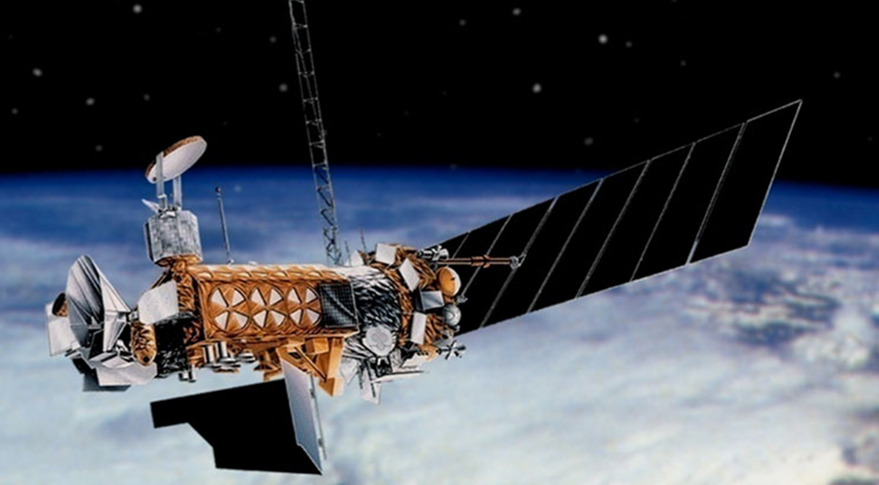What's Next for Air Force Weather Satellites?

PHOENIX — The U.S. military's highest priority weather satellite, a spacecraft requested by U.S. Strategic Command to observe clouds and theaters of operations, is on hold after NASA rescinded the contract award.
In September the Space Rapid Capabilities Office, working with the NASA Ames Research Center's small spacecraft prototyping office, awarded Sierra Nevada Corp. a $119 million contract to develop a satellite to gather cloud and theater imagery until the service finds a long-term solution to fulfilling its weather requirements. In October, Space Systems Loral protested the award and NASA rescinded it.
Now, NASA is closed and the Air Force will discuss what to do next on the program, known as ORS-8, when the government shutdown ends, Ralph Stoffler, Air Force weather director, told SpaceNews.
ORS-8 competitors declined to comment on the protest or award, which was made through an indefinite delivery, indefinite quantity contract (IDIQ) vehicle called Small Spacecraft Prototyping Engineering Development and Integration (SSPEDI).
However, Dario Zamarian, SSL group president, said by email, "A Maxar Technologies company, SSL is honored to be one of the SSPEDI IDIQ primes and looks forward to supporting the U.S. Air Force's roadmap for space-based weather observing missions. Based on our long history of delivering reliable satellite systems, SSL has assembled a team of experts with strong credentials in meteorological systems."
Weather monitoring and forecasting are key to successful military operations but the Air Force has struggled for years to replace aging weather satellites. Now, the service has plans in place to update its constellation, but Stoffler said he will continue to worry until the task is completed.
"Theater weather and clouds are the most critical things that I worry about," Stoffler said at the American Meteorological Conference here. "Defense Meteorological Satellite Program is coming to end-of-life and sometime in 2021 the European satellites probably will, too."
Get the Space.com Newsletter
Breaking space news, the latest updates on rocket launches, skywatching events and more!
The U.S. military relies heavily on DMSP-17 launched in 2006 and DMSP-18 launched in 2009, polar-orbiting satellites that cross the equator in the morning to gather global weather data. To keep watch on U.S. Central Command, the military obtains observations from Eumetsat's Meteosat 8, a geostationary weather satellite that is likely to run out of fuel in a couple years. [In Photos: US Air Force Launches DMSP-19 Military Weather Satellite ]
Before Meteosat 8 stops working, the Air Force hopes to move a National Oceanic and Atmospheric Administration Geostationary Operational Environmental Satellite into a similar orbit.
"We are still working with NOAA about potentially floating one of their old satellites over," Stoffler said. "When the European satellite goes away, that fixes Central Command."
It is a temporary fix, though. In the 2019 National Defense Authorization Act, the House Armed Services strategic forces subcommittee asked the Air Force Secretary for a plan by March 1 to acquire persistent weather imagery over Central Command without relying on foreign or legacy NOAA spacecraft.
As the Air Force sorts out these questions, Stoffler remains enthusiastic about private sector capabilities.
"One thing I'm really hanging my hat on is a lot of companies are looking at commercial weather applications," Stoffler said. "Congress plussed us up to buy commercial weather data. We are trying to use that money to help some of them get into that business."
Small satellite constellations, for example, may help the Air Force grapple with its long-term need for electro-optical and infrared imagery.
"There are a lot of people launching big constellations of small satellites," Stoffler said. "If you put some electro-optical/infrared sensors on some of those satellites, the global coverage you get is phenomenal with a refresh rate that is phenomenal as well. I think that's the future of where we're going."
This story was provided by SpaceNews, dedicated to covering all aspects of the space industry.
Join our Space Forums to keep talking space on the latest missions, night sky and more! And if you have a news tip, correction or comment, let us know at: community@space.com.
Debra Werner is a correspondent for SpaceNews based in San Francisco. She earned a bachelor’s degree in communications from the University of California, Berkeley, and a master’s degree in journalism from Northwestern University. Debra is a recipient of the 1989 Gerald Ford Prize for Distinguished Reporting on National Defense. Her SN Commercial Drive newsletter is sent out on Wednesdays.










